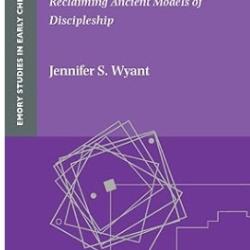In the 1960s, a new cultural emphasis on individuality started us down the path we’re on now. More and more, parents wanted their children’s names to stand out, not fit in. Fewer and fewer children were given names in the top 25, and as the years went on, the No. 1 name in the country represented fewer and fewer babies. (While the ’70s powerhouse Jennifer seems ultra-common today, it never came close to the heights of earlier No. 1 names John and Mary. As for Jacob and Emily, they wouldn’t have even cracked the top 10 in John and Mary’s heyday.)
Then, in the mid-1990s, two forces turbocharged the dramatic diffusion of American baby names that we’ve seen over the past decade. The first was the Internet. Online life altered parents’ basic concept of name individuality. People started to think about names in the context of unique usernames and e-mail addresses. A century ago, one Amelia Jenkins might live a few towns from another Amelia Jenkins, and they would neither know nor care. But on the Web, we’re all next-door neighbors. Prospective parents of an Amelia Jenkins now type the name into Google or Facebook and freak out. They find dozens of Amelia Jenkinses. The name is “taken.”
The second big change came courtesy of Michael Shackleford, an actuary in the Social Security Administration who in 1997 took it upon himself to tally up and publish online a list of the most common names on newborns’ Social Security number applications. In past generations, parents were left to guess (often unsuccessfully) at name trends and popularity. Now, there is an official ranking.
The result of all this has been a sort of reverse arms race, with parents across the country desperate to make sure that their chosen name doesn’t come out too near the top. Half a century ago, 39 percent of all babies born in this country were given a name in the top 25. Today that number is down to 16 percent. The trend cycle is speeding up, too, as parents patrol for the new and the different, staying alert not just to a name’s current popularity but also to which way it is trending. Names rise fast, but they also fall fast. Miley/Mylee was one of the fastest rising names of 2007 and 2008; by 2009, it was one of the fastest fallers.
In eras past, name choices were aimed at an audience of family or community. We named babies after relatives, for instance, to honor them and to please those who loved them. Today, we leave the homages to middle names and approach naming more like an exercise in branding: We’re trying to position our new entry to give it the best possible advantage in life’s marketplace. That means standing out.
Yet a funny thing happened on the way to uniqueness. We may like the idea of distinctive names, but our tastes are as alike as they ever were. Even parents with different name sensibilities are influenced by the same underlying name fashions: Vowels, especially long vowels, are good — think Owen and Ava. The -n ending is also good, as in Kaitlyn and Mason. But clusters of consonant sounds are bad. (Sorry, Gertrude and Herman.) . . . .
So what happens when the irresistible desire to be different meets immovably similar tastes? You end up with those six names that rhyme with Aidan in the top 100 names of the 2000s, and 38 of them, from Aaden to Zayden, in the top 1,000. The irony is that classic English names such as George and Edward, Margaret and Alice — the names that used to be standard-bearers — all have distinctive sounds. They aren’t prisoners to phonetic fashion; each of them sounds instantly recognizable. Contemporary names, by contrast, travel in phonetic packs. More than a third of American boys now receive a name ending in the letter N. (In decades past, the most popular boys’ names were more evenly split between a number of endings, including D, L, S and Y.)
Call it lockstep individualism. Instead of a classroom with two Williams and two Jameses, today we have one Aydin, one Jaden, one Braedon and one Zayden — not to mention a Payton, a Nathan and a Kaydence. In our rush to bless our children with uniqueness, we’ve created a generation that sounds more alike than ever.
via Your baby is unique, but her name isn’t.















